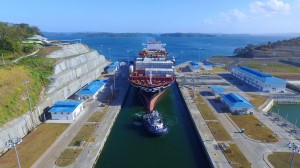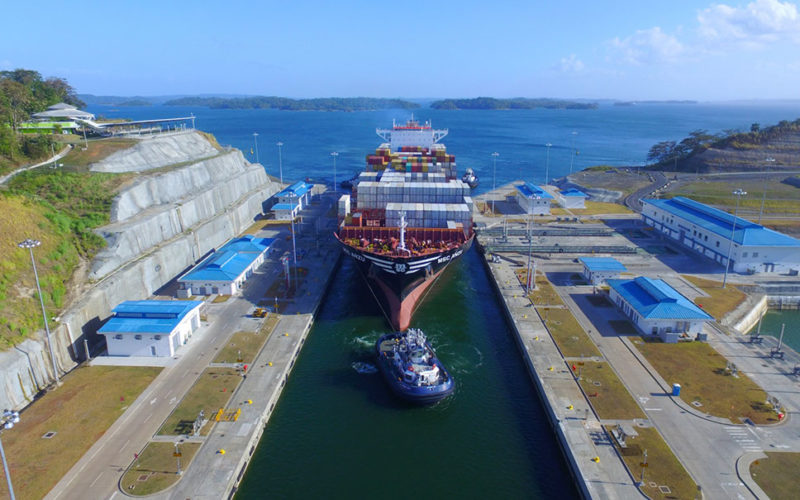
In May 2019, the 1,210-foot neo-Panamax containership Triton transited the Panama Canal carrying the equivalent of 15,000 20-foot cargo containers. That trial run was followed by successful passages by Talos and Theseus, two sister vessels in the Evergreen shipping fleet.
Based on the success of these transits and others involving similarly-sized ships, the Panama Canal Authority (PCA) in May 2021 formally increased the maximum length and beam for ships passing through the waterway to 1,215 feet long and 168.14 feet wide. The previous maximums were 1,205 feet and 161 feet, respectively.
The change came a month before the fifth anniversary of the opening of the Cocoli and Agua Clara Locks. Their opening, in June 2016, created a larger third lane through the nearly 50-mile waterway.
Container ships account for more than half the transits of the new locks. These larger size limits allow container ships loaded with boxes 20 rows wide to transit. Previously, the new locks could accommodate container ships loaded no more than 19 boxes wide. With this 20-row configuration, the Triton-class vessels have a total twenty-foot equivalent unit (TEU) allowance of 15,313.
With this change, nearly 97% of the world’s container ships can now transit the canal, excluding only the largest of the ultra large container vessels now sailing. The largest such ships in the world are now longer than 1,300 feet, with beams exceeding 200 feet, and cargo capacities approaching 24,000 TEU.
“Given the shorter traveling distance and larger capacity it offers, the Canal reduces vessels’ fuel consumption and therefore emissions, having a positive impact on the reduction of global greenhouse gases compared to other routes,” the canal authority said in a statement.
The authority adds that the larger authorized size of vessels gives shipping companies “greater flexibility in making decisions for the deployment and construction of vessels with greater capacity that can transit through the Panama Canal.”
The trial transits involving Triton and its sister vessels were used to confirm the ships could safely operate within the canal. In a statement, Panama Canal Administrator Ricaurte Vásquez Morales said this modification in maximum size of vessel “was made possible by our team’s experience operating the neo-Panamax Locks safely and reliably over the past five years.”
Accommodating larger ships through the neo-Panamax vessels is only one change PCA has implemented since June 2016. Slightly deeper drafts also are permitted. The former maximum, a 49-foot draft, has been increased to 50 feet. The Canal Authority said “increased rainfall and successful water management at the Gatun Lake” allowed the canal to handle deeper drafts.
The monthly number of vessels has also increased. In the second half of 2016, the locks saw about 100 vessels per month. By contrast, between May 2019 and August 2020, the last time period for which statistics are currently available, more than 266 vessels passed through the locks per month.

